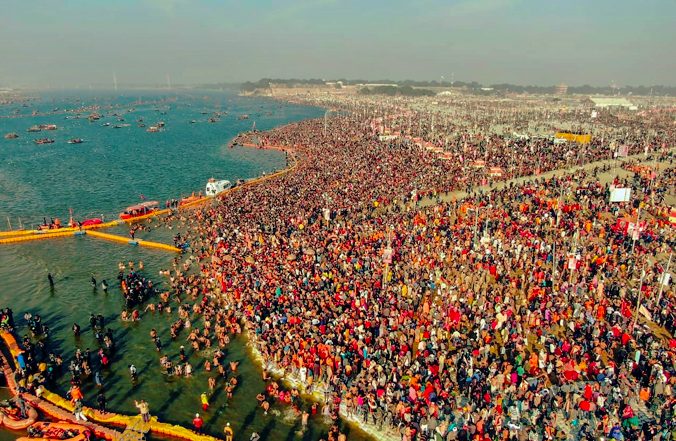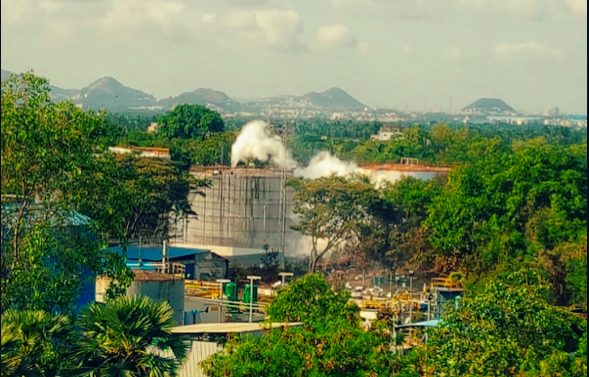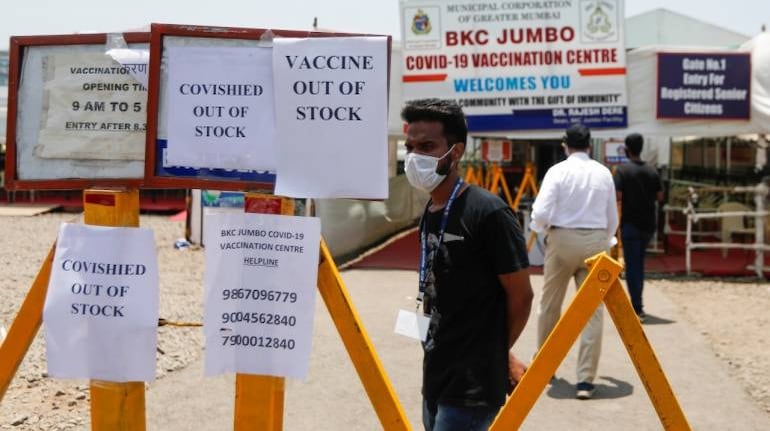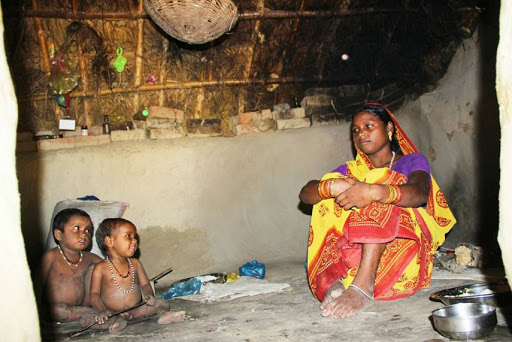More than Millions of people have taken to the waters at the confluence of India’s sacred Ganges and Yamuna rivers as part of the Kumbh Mela festival – humanity’s largest gathering.
Approximately 15m people could have bathed on Tuesday. They expect about 120m visitors over 49 days.
Hindus believe bathing at the rivers will cleanse their sins and bring salvation.
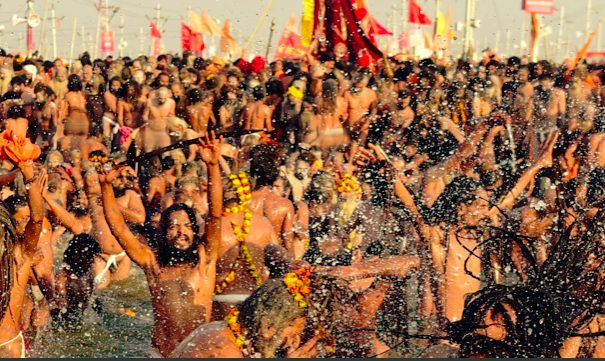
Sadhus – or ascetics – smeared ash on their bodies as they came out of the water and chanted “Har Har Gange”, or “Mother Ganges”, and danced while posing for photographers.
Thousands of the Sadhus – naked and wearing marigold garlands around their necks – were escorted by police to the river as they chanted slogans invoking Shiva, the Hindu god of destruction. Many were waving tridents and swords.
At the last Kumbh in 2013, female ascetics were allowed to bathe at the confluence of the rivers – known as the Sangam – for the first time. A few hundred transgender people were among those who bathed on Tuesday morning.
This year the gathering will be particularly huge and many believe India’s Hindu nationalist government has organised it with an eye on key general elections due in the summer.
Massive billboards of Prime Minister Narendra Modi dot Allahabad city and the mela ground. Huge cardboard cut-outs have been placed strategically at the bathing areas.
A temporary tent city, spread over 32 sq km (12 sq miles) has been set up to accommodate the masses, complete with hundreds of kilometres of new roads. Hospitals, banks and fire services have been set up just for the festival, along with 120,000 toilets.
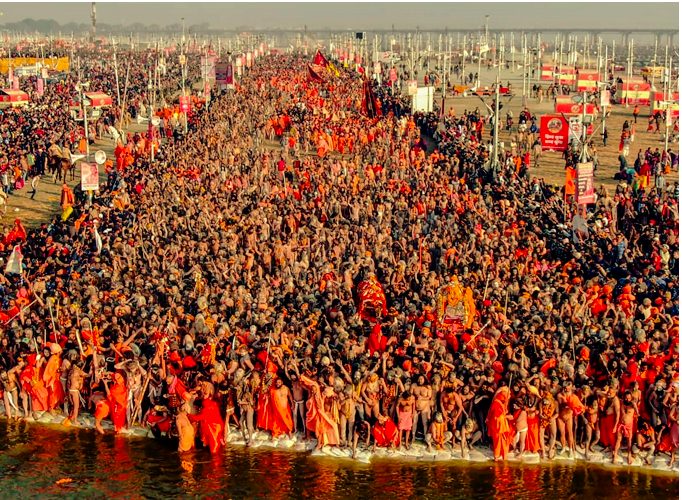
Hundreds of new train services are running to and from Allahabad to tackle the rush of pilgrims and more than 30,000 police and paramilitaries have been deployed to provide security and manage the crowds.
In the run up to the festival, religious sects held daily processions marked by much pomp and show.
At one such procession on Sunday night, there were elephants, camels and horses. Brass bands and drummers played, as religious leaders sitting atop several vehicles threw marigold flowers to thousands of devotees.
Traditionally Indian Astrology determines most aspects of the festival, including its date, duration and location
This year’s event expects 120 million visitors over seven weeks, dwarfing last year’s Hajj pilgrimage in Saudi Arabia which drew about 2.4 million
The most recent full Kumbh, held in 2013 in Allahabad, was also a Maha (or great) Kumbh, which happen every 144 years.

